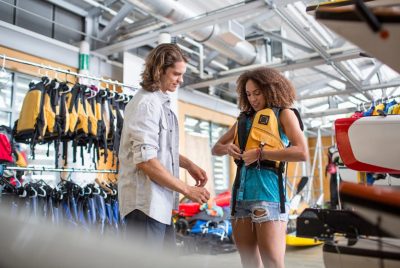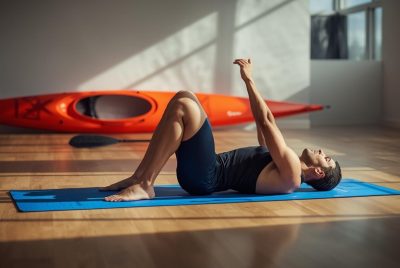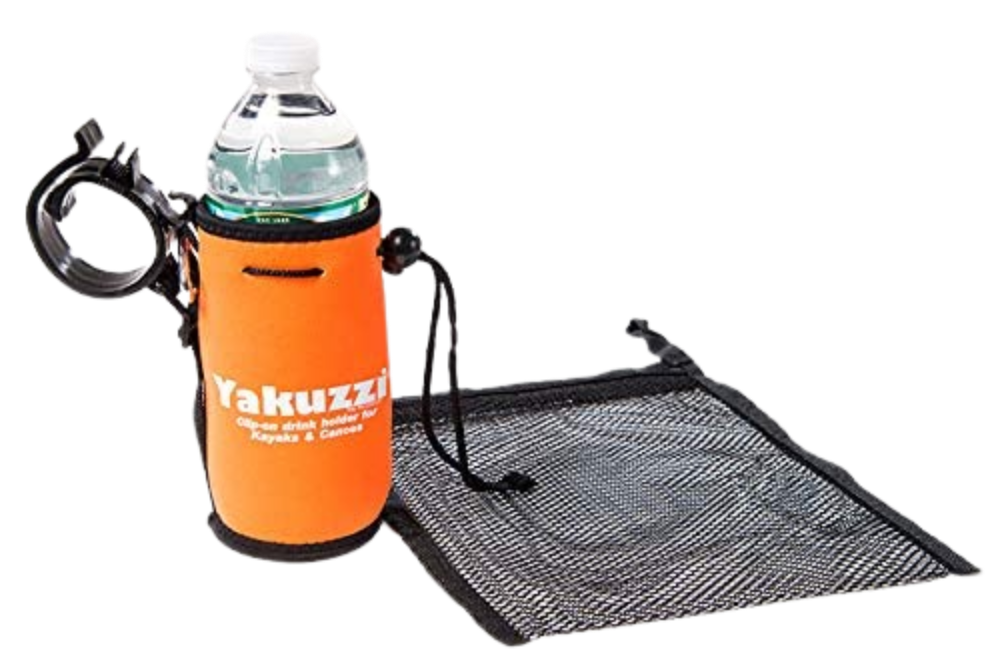Stepping into the world of kayaking is exciting, but it can also feel a little overwhelming—especially…
8 Things To Consider Before Taking A Solo Trip In Your Kayak

Taking a solo trip in your kayak is more than just an adventure; it’s an opportunity for self-reflection, freedom, and true connection with nature.
Unlike group outings, paddling solo allows you to set your own pace, choose your route, and fully immerse yourself in the serene beauty of the water without distractions.
However, with great independence comes the responsibility to plan carefully and prioritize safety.
Whether you’re an experienced kayaker or someone embarking on your first solo adventure, there are several factors to consider to ensure your trip is both enjoyable and secure.
From selecting the right gear to understanding weather patterns and preparing for unexpected challenges, being informed and ready is key.
Get ready to walk through eight crucial tips to ensure you have a safe and rewarding solo kayaking adventure.
1)) Safety Gear
Ensuring you have the proper safety gear is one of the most important steps before heading out on a solo kayaking adventure.
A well-fitted personal flotation device (PFD) is non-negotiable—it provides necessary buoyancy and could save your life in an emergency.
A whistle attached to your PFD allows you to signal for help if needed. Equip your kayak with a reliable paddle leash to prevent losing your paddle in strong currents or wind, and consider carrying a spare paddle, just in case.
Other key items include a waterproof bag for your phone or GPS, a first-aid kit, and a small flashlight or headlamp for unexpected low-light conditions.
Beyond these basics, wearing weather-appropriate clothing and footwear that provides grip and protection can prevent minor injuries and discomfort.
By taking the time to prepare and carry this important safety gear, you’ll set yourself up for a safer, more enjoyable solo kayaking experience.
2)) Weather Conditions
Weather conditions play a crucial role in the safety and success of any kayaking trip, particularly when you’re venturing out alone.
Before you set out, it’s critical to thoroughly check the weather forecast, paying close attention to wind speed, precipitation, and temperature.
High winds or sudden gusts can make paddling challenging and potentially lead to capsizing, especially in open waters.
Similarly, heavy rain can reduce visibility, create stronger currents, and increase the risk of hypothermia if you’re not properly dressed.
Beyond the obvious conditions, it’s also important to consider tidal patterns and water levels, as they can shift unexpectedly with weather changes.
Always keep in mind that the weather can be unpredictable, so it’s wise to have a backup plan or be prepared to postpone the trip if conditions seem unfavorable.
By staying informed and prepared, you can minimize risks and ensure a safer, more enjoyable kayaking adventure.
3)) Route Planning
Planning your route is a critical step when preparing for a solo kayaking trip, as it helps ensure both safety and enjoyment.
Begin by researching the waterway you plan to explore, taking note of key features such as currents, tides, weather patterns, and any potential hazards like rocks, strong rapids, or submerged obstacles.
It’s also crucial to know the entry and exit points for your kayak, as well as nearby landmarks that can assist with navigation.
Assess your skills and experience to determine if the chosen route aligns with your abilities, avoiding overly challenging water conditions if you are not adequately prepared.
Always have a detailed map or GPS device on hand and consider sharing your planned route and estimated return time with someone you trust in case of emergencies.
Thoughtful route planning not only reduces risks but also allows you to fully immerse yourself in the adventure, knowing you’re well-prepared for the journey ahead.
4)) Kayak Type
Choosing the right kayak is a critical step when planning a solo kayaking trip, as it plays a significant role in your safety, comfort, and overall experience on the water.
Different types of kayaks are designed for specific purposes, so understanding your needs and the conditions you’ll face is key.
For instance, a sit-on-top kayak offers stability and is ideal for calm waters and beginners, while a touring kayak, with its streamlined shape, is perfect for long-distance trips and handling choppy waters more efficiently.
If you’re venturing to narrower rivers or whitewater rapids, a shorter and more maneuverable kayak, such as a whitewater kayak, might be the best choice.
Consider the storage capacity of the kayak—solo trips often require you to carry enough supplies, such as food, water, and safety gear, so ensure the kayak has sufficient space for your gear without compromising balance.
Taking the time to select the appropriate kayak for your solo adventure is a smart investment that will enhance your confidence and allow you to focus on enjoying the serenity of the water.
5)) Paddling Skills
Before embarking on a solo kayaking adventure, it is necessary to evaluate and hone your paddling skills.
Being on the water alone means you are solely responsible for navigating through various conditions, which can range from calm lakes to strong currents or choppy waves.
Proper paddling techniques not only help you move more efficiently but also conserve energy, allowing you to stay on the water for longer periods.
Mastering maneuvers like turning, back-paddling, and bracing can help you maintain control of the kayak in unpredictable situations.
It’s also important to practice self-rescue techniques, such as re-entering your kayak after capsizing, as this could be a lifesaving skill during emergencies.
Whether through guided lessons, practicing in controlled environments, or learning from experienced kayakers, developing confidence and competence in paddling ensures that your solo trip will be both safe and enjoyable.
Investing time in preparation will make all the difference in how smoothly your adventure unfolds.
6)) Emergency Plan
When embarking on a solo kayaking trip, having a well-thought-out emergency plan is crucial for your safety.
Begin by informing a trusted person about your trip details, including your intended route, expected return time, and any alternate plans.
Familiarize yourself with the area’s weather conditions, water currents, and any potential hazards you may encounter.
Equip yourself with vital safety gear, such as a personal flotation device, whistle, first aid kit, and a waterproof communication device like a VHF radio or fully charged phone in a dry bag.
It is wise to practice self-rescue techniques and rehearse scenarios where you might need to respond quickly to an emergency.
Knowing landmarks or nearby points where help might be accessed can also prove invaluable.
An emergency plan is not just a precaution—it can be a lifesaving guide that ensures you are prepared to handle unexpected situations with confidence and composure during your solo paddle.
7)) Hydration And Snacks
When preparing for a solo kayaking trip, one of the most critical aspects often overlooked is staying hydrated and properly fueled.
Kayaking, while peaceful and enjoyable, is a physically demanding activity that requires both energy and stamina.
Dehydration can quickly set in, especially on hot days or during extended trips, leading to fatigue, dizziness, and impaired decision-making.
Always carry ample water in a secure, easily accessible container, and consider using a reusable water bottle or hydration pack for convenience.
Similarly, bringing nutritious snacks is imperative to maintain your energy levels throughout the excursion.
Opt for lightweight yet calorie-dense foods like granola bars, trail mix, or dried fruits that are easy to store and consume on the go.
Planning your hydration and nutrition thoughtfully not only ensures your body remains in peak condition but also allows you to fully enjoy the tranquility and adventure of paddling solo without interruptions caused by hunger or fatigue.
8)) Wildlife Awareness
Understanding the wildlife in the area where you’ll be kayaking is vital for a safe and enjoyable solo trip.
Different regions are home to diverse animal species, both on land and in the water, and knowing what to expect can help prevent unwanted encounters.
For instance, in some areas, you might encounter birds, fish, or even larger aquatic animals like seals or dolphins, while in other locations, you may need to be mindful of potentially dangerous creatures such as alligators or venomous snakes.
Researching the local ecosystem before your trip can give you insights into the types of behavior to watch for and how to respond if you find yourself near wildlife.
Staying aware of your surroundings while paddling—watching for movement in the water or along the shore—can help you avoid startling animals, which may become defensive.
Always respect nature by maintaining a safe distance from wildlife and refraining from feeding or disturbing them.
By being prepared and cautious, you can ensure the harmony of your adventure without causing harm to yourself or the environment.
Conclusion
Taking a solo trip in your kayak can be an enriching and unforgettable experience, offering moments of peace, self-discovery, and a deeper appreciation for nature.
However, venturing out alone requires careful planning and consideration to ensure your safety and enjoyment.
By understanding the importance of preparation, from checking your equipment and weather conditions to familiarizing yourself with the waterway, you set the stage for a successful adventure.
Equipping yourself with safety gear, mastering essential kayaking skills, and sharing your plans with someone reliable adds an extra layer of security and peace of mind.
Respecting wildlife and the environment should also be a priority, as it allows you to connect with the natural world responsibly and sustainably.
Whether you’re seeking solitude, personal challenges, or simply the joy of exploring new waters, taking the time to consider these key factors will enhance your overall experience.
A solo kayaking trip is not just about reaching your destination—it’s about savoring the journey, connecting with yourself, and building memories that will last a lifetime.
With proper preparation, you can paddle confidently into an adventure that is as fulfilling as it is safe.





